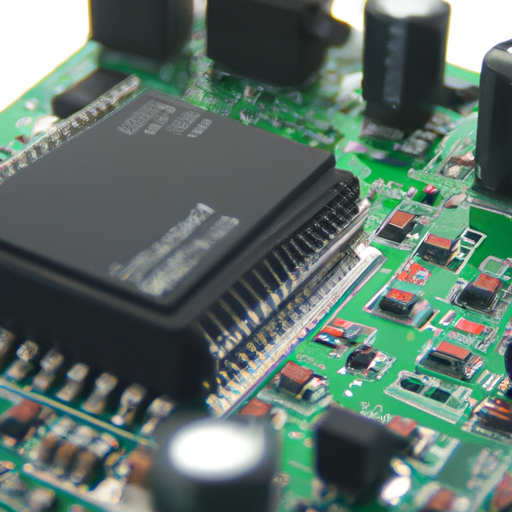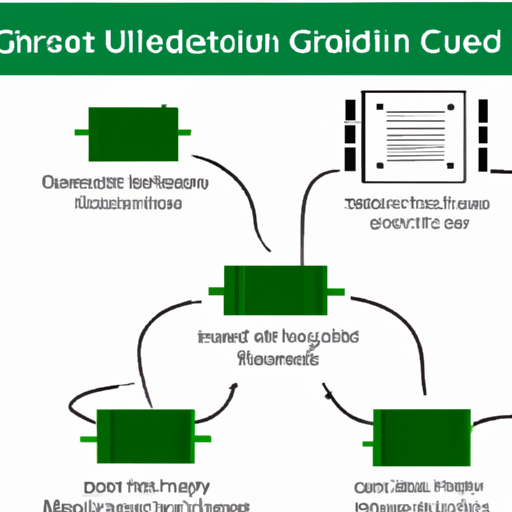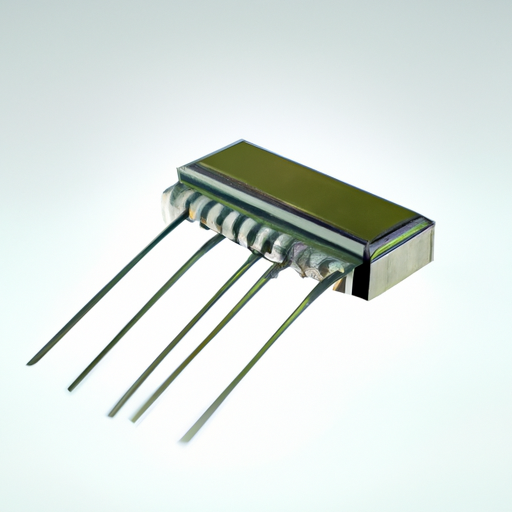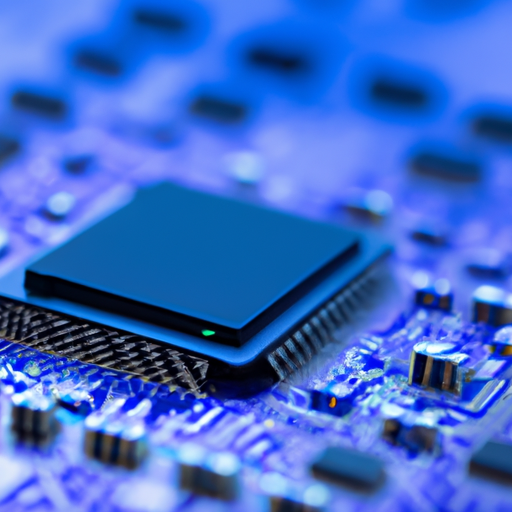What are the popular models of power amplifier integrated circuits?
Popular Models of Power Amplifier Integrated Circuits
I. Introduction
Power Amplifier Integrated Circuits (PAICs) are essential components in modern electronic systems, serving the critical function of amplifying low-power signals to a level suitable for driving loads such as speakers, antennas, or other electronic devices. These circuits are pivotal in various applications, from telecommunications to consumer electronics, automotive systems, and beyond. This article will explore the popular models of power amplifier integrated circuits, their types, specifications, applications, and the latest trends in power amplifier technology.
II. Understanding Power Amplifiers
A. Function and Purpose of Power Amplifiers
Power amplifiers are designed to increase the power of a signal. They take a weak input signal and boost its amplitude, allowing it to drive larger loads. This amplification is crucial in applications where signal strength is vital, such as in radio frequency (RF) communications, audio systems, and broadcasting.
B. Types of Power Amplifiers
Power amplifiers can be classified into several categories based on their operation and efficiency:
1. **Class A**: Known for their linearity and low distortion, Class A amplifiers conduct over the entire input signal cycle. However, they are inefficient, typically operating at around 20-30% efficiency.
2. **Class B**: These amplifiers conduct for half of the input signal cycle, offering better efficiency (up to 70%) but can introduce crossover distortion.
3. **Class AB**: A compromise between Class A and Class B, Class AB amplifiers conduct for more than half but less than the entire cycle, providing a balance of efficiency and linearity.
4. **Class C**: Primarily used in RF applications, Class C amplifiers conduct for less than half of the input cycle, offering high efficiency but at the cost of linearity.
5. **Other Classes (D, E, F, etc.)**: These classes utilize various techniques to improve efficiency and performance, often employing switching methods to achieve high power levels with minimal heat generation.
C. Key Parameters of Power Amplifiers
When evaluating power amplifiers, several key parameters are essential:
1. **Gain**: The ratio of output power to input power, indicating how much the amplifier increases the signal strength.
2. **Efficiency**: The ratio of output power to total power consumed, crucial for battery-operated devices.
3. **Linearity**: The ability of the amplifier to reproduce the input signal accurately without distortion.
4. **Output Power**: The maximum power the amplifier can deliver to the load.
5. **Frequency Response**: The range of frequencies over which the amplifier operates effectively.
III. Popular Models of Power Amplifier Integrated Circuits
A. RF Power Amplifiers
1. **Qorvo QPA2210**
- **Specifications**: The QPA2210 is a high-performance RF power amplifier designed for 5G applications. It operates in the frequency range of 1.5 to 2.7 GHz and provides a typical output power of 30 dBm with a power gain of 30 dB.
- **Applications**: Ideal for base stations, small cells, and other wireless communication systems, the QPA2210 is known for its efficiency and linearity, making it suitable for high-frequency applications.
2. **Skyworks SKY65041**
- **Specifications**: This RF power amplifier operates in the 2.4 to 2.5 GHz range, delivering up to 30 dBm output power with a gain of 25 dB. It features a compact package and low power consumption.
- **Applications**: Commonly used in Wi-Fi and Bluetooth applications, the SKY65041 is favored for its reliability and performance in consumer electronics.
3. **Analog Devices ADL5605**
- **Specifications**: The ADL5605 is a high-speed RF amplifier with a frequency range of 1 MHz to 6 GHz. It offers a gain of 20 dB and a low noise figure, making it suitable for sensitive applications.
- **Applications**: This amplifier is widely used in RF front-end modules, radar systems, and communication devices, where low noise and high gain are critical.
B. Audio Power Amplifiers
1. **Texas Instruments TPA3116D2**
- **Specifications**: The TPA3116D2 is a Class D audio amplifier capable of delivering 15W per channel into a 4-ohm load with an efficiency of over 90%. It features built-in thermal and short-circuit protection.
- **Applications**: This amplifier is popular in portable audio systems, home theater systems, and Bluetooth speakers due to its high efficiency and compact size.
2. **NXP TDA7498E**
- **Specifications**: The TDA7498E is a dual-channel Class D audio amplifier that can deliver up to 2 x 50W into 4-ohm speakers. It features low distortion and high efficiency.
- **Applications**: Commonly used in soundbars, televisions, and other consumer audio devices, the TDA7498E is known for its excellent sound quality and performance.
3. **STMicroelectronics TDA7492P**
- **Specifications**: This Class D amplifier provides 2 x 25W output power into 4-ohm loads with a high efficiency of around 90%. It includes various protection features and a compact design.
- **Applications**: The TDA7492P is widely used in portable audio applications, including wireless speakers and sound systems, due to its small footprint and powerful output.
C. General Purpose Power Amplifiers
1. **Microchip MCP602**
- **Specifications**: The MCP602 is a dual operational amplifier with a wide supply voltage range and low noise. It is suitable for various applications requiring signal amplification.
- **Applications**: This amplifier is commonly used in sensor signal conditioning, audio applications, and general-purpose amplification tasks.
2. **Maxim Integrated MAX9744**
- **Specifications**: The MAX9744 is a Class D audio amplifier that delivers 20W per channel into 4-ohm loads. It features a low quiescent current and high efficiency.
- **Applications**: Ideal for portable audio devices, the MAX9744 is used in applications where battery life is critical, such as in mobile speakers and sound systems.
3. **ON Semiconductor NCP2810**
- **Specifications**: The NCP2810 is a low-power audio amplifier that provides 1W output power into an 8-ohm load. It features a low distortion rate and a compact package.
- **Applications**: This amplifier is suitable for portable devices, such as smartphones and tablets, where space and power efficiency are essential.
IV. Applications of Power Amplifier Integrated Circuits
Power amplifier integrated circuits find applications across various industries:
A. Telecommunications
In telecommunications, PAICs are crucial for amplifying signals in base stations, repeaters, and mobile devices, ensuring reliable communication over long distances.
B. Consumer Electronics
In consumer electronics, power amplifiers enhance audio quality in devices like televisions, sound systems, and portable speakers, providing users with an immersive experience.
C. Automotive Systems
In automotive systems, PAICs are used in infotainment systems, navigation devices, and communication systems, improving audio quality and connectivity.
D. Industrial Applications
In industrial settings, power amplifiers are employed in control systems, automation, and monitoring equipment, ensuring efficient operation and communication.
E. Medical Devices
In medical devices, PAICs are used in imaging systems, diagnostic equipment, and therapeutic devices, where precise signal amplification is critical for accurate results.
V. Trends and Innovations in Power Amplifier Technology
A. Advancements in Efficiency and Performance
Recent advancements in semiconductor technology have led to the development of more efficient power amplifiers, reducing power consumption and heat generation while improving performance.
B. Integration with Digital Signal Processing (DSP)
The integration of power amplifiers with digital signal processing technology allows for enhanced signal manipulation, leading to improved audio quality and communication performance.
C. Miniaturization and Packaging Innovations
As electronic devices become smaller, the demand for compact power amplifiers has increased. Innovations in packaging and design have enabled the development of smaller, more efficient PAICs.
D. Emerging Technologies (GaN, SiC, etc.)
The use of wide-bandgap semiconductors like Gallium Nitride (GaN) and Silicon Carbide (SiC) is gaining traction in power amplifier design, offering higher efficiency and performance in high-frequency applications.
VI. Conclusion
In summary, power amplifier integrated circuits play a vital role in modern electronic systems, providing the necessary amplification for various applications. From RF communications to audio systems and beyond, the choice of the right PAIC is crucial for achieving optimal performance. As technology continues to evolve, we can expect further advancements in efficiency, integration, and miniaturization, paving the way for innovative applications in the future.
VII. References
- Academic Journals
- Industry Reports
- Manufacturer Datasheets
- Online Resources and Articles
This comprehensive overview of popular models of power amplifier integrated circuits highlights their significance in various applications and the ongoing trends shaping their development. Understanding these components is essential for engineers and designers looking to optimize their electronic systems.





